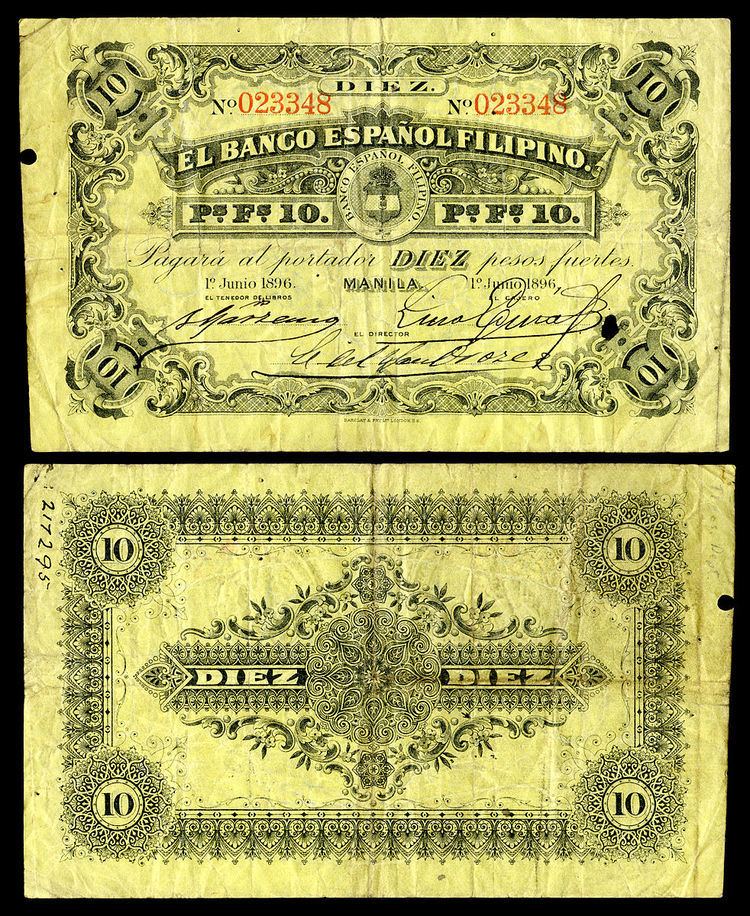 | ||
Banknotes of the Philippine peso are issued by the Bangko Sentral ng Pilipinas (Central Bank of the Philippines) for circulation in the Philippines. The smallest amount of legal tender in wide circulation is 20 pesos and the largest is 1000 pesos. The front side of each banknote features prominent people along with buildings, and events in the country's history while the reverse side depicts landmarks and animals. While the 5- and 10-peso denominations have been concurrently offered in coins in recent years, the 5- and 10-peso notes have yet to be demonetized.
Higher denominations
The Central Bank of the Philippines (Bangko Sentral ng Pilipinas) issued only 300,000 pieces of this 216 mm x 133 mm 2,000 Philippine peso centennial commemorative legal tender banknote. Another version, with the same design but measured at 160 x 66 mm, was also planned to be issued as legal tender in 2001, but due to the ouster of President Joseph Estrada as the result of the Second EDSA revolution (EDSA People Power II), the notes were stored in the vaults of the Bangko Sentral ng Pilipinas. As of 2010, the bank was considering destroying the bulk of the unissued notes (known as the "New Millennium" or "Erap" notes), saving only 50,000 of the five million pieces to be demonetized for "historical, educational, numismatic, or other purposes". However it was not until 2012 that the bank began selling this numismatic product in a folder that clearly stipulates that the notes are not legal tender.
The obverse side features President Joseph Estrada taking his oath of office on June 30, 1998 in the historic Barasoain Church, the seat of the first democratic republic in Asia shown in the background as well as the scroll of the Malolos Constitution and the seal of the BSP (Bangko Sentral ng Pilipinas).
The reverse side depicts the re-enactment of the declaration of Philippine Independence at the Aguinaldo Shrine in Kawit, Cavite on June 12, 1898 by President Fidel V. Ramos and also features the Philippine Centennial Commission logo.
The security features of the note include a 3-dimensional cylinder mold-made portrait watermark of the two presidents and the years 1898–1998, iridescent band, color-shift windowed security thread, latent image and perfect see-through register.
The 100,000-peso centennial note, measuring 215 x 360 mm, is accredited by the Guinness Book of World Records as the world's largest legal tender note in terms of size. 1,000 pieces were issued during the celebration of the centennial of Philippine independence in 1998.
